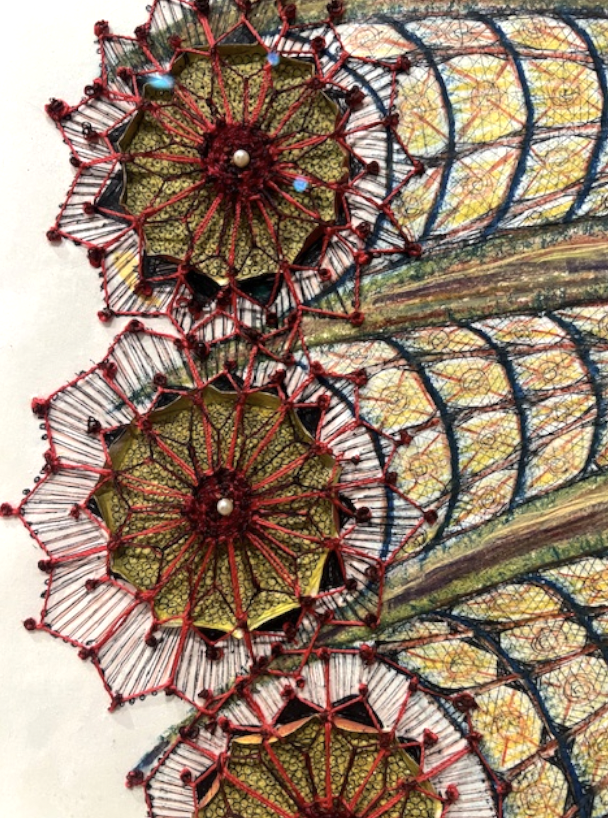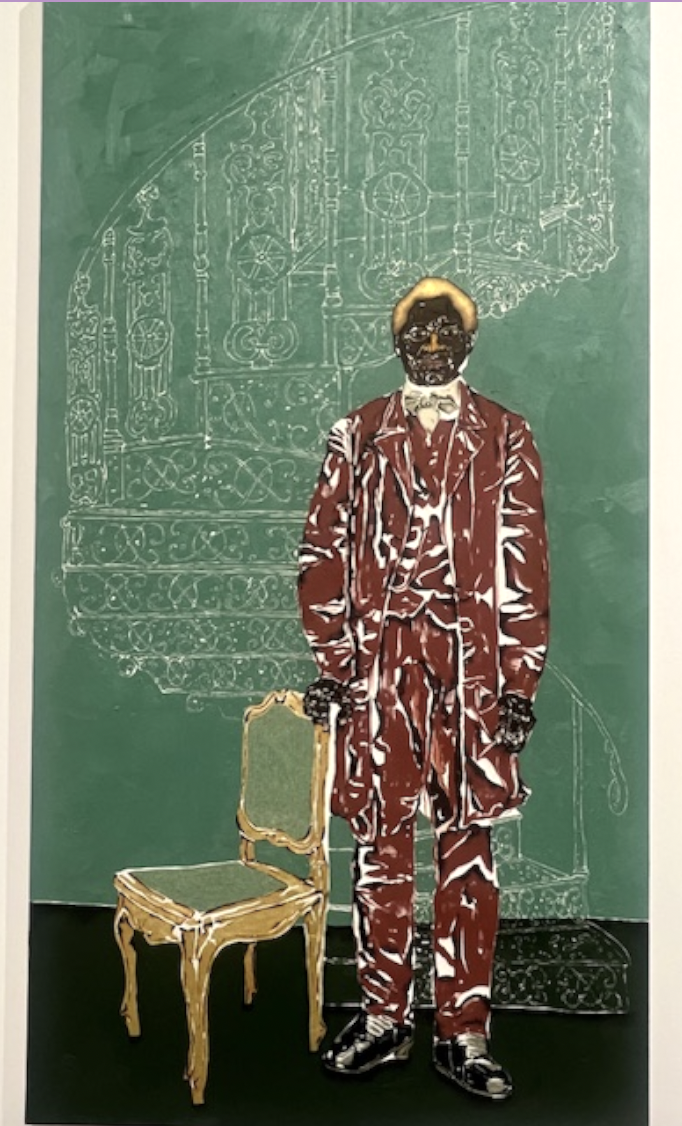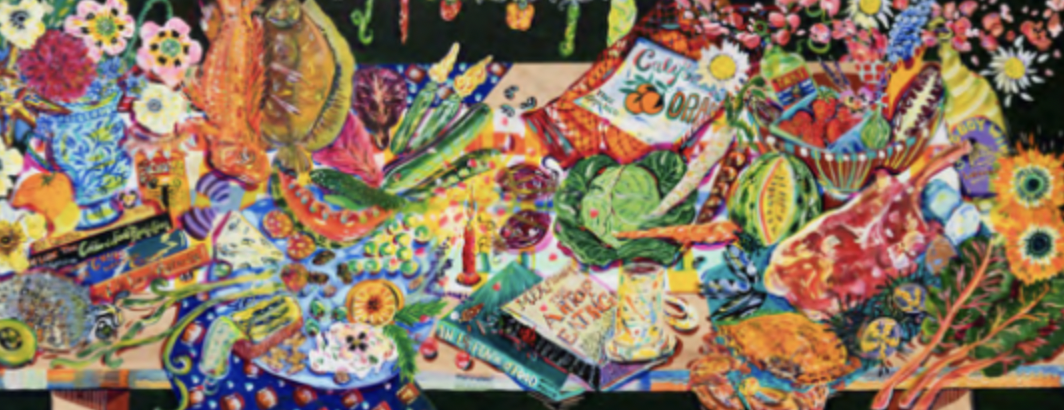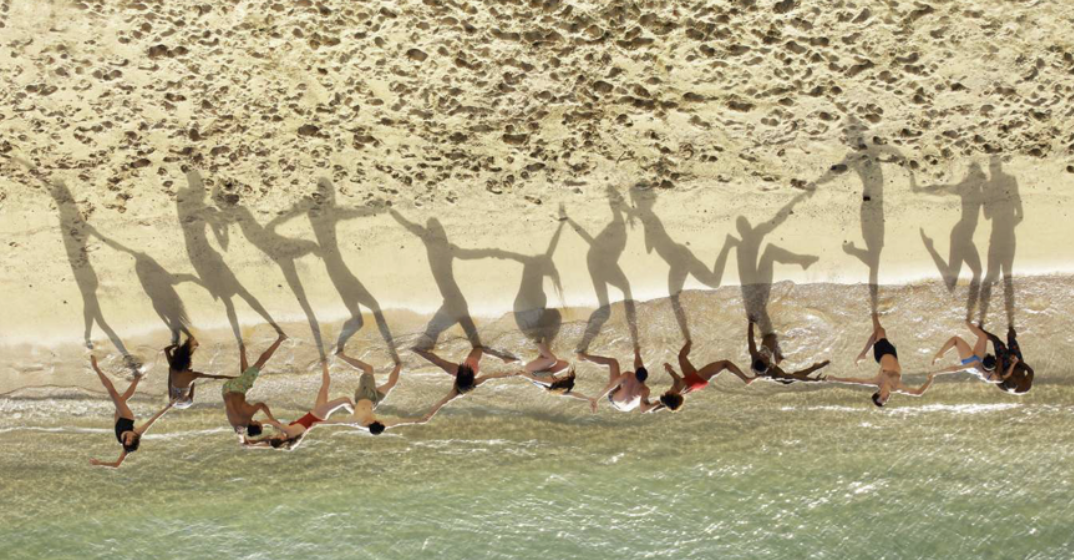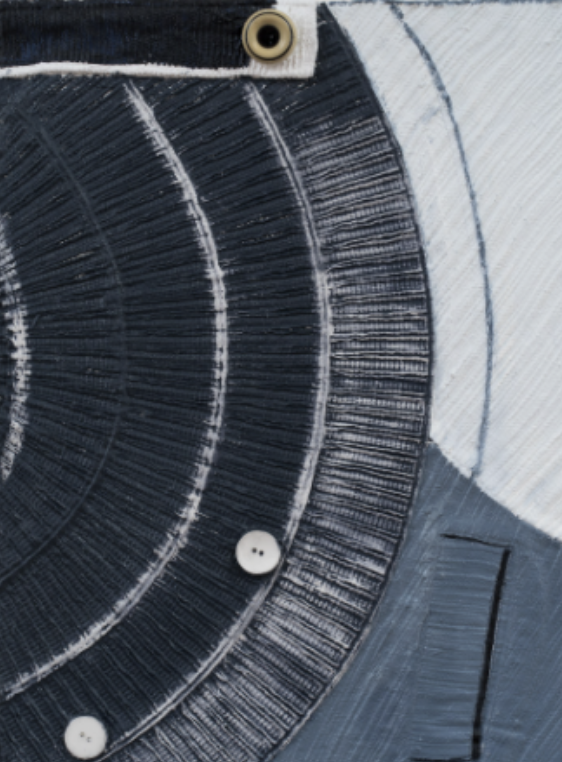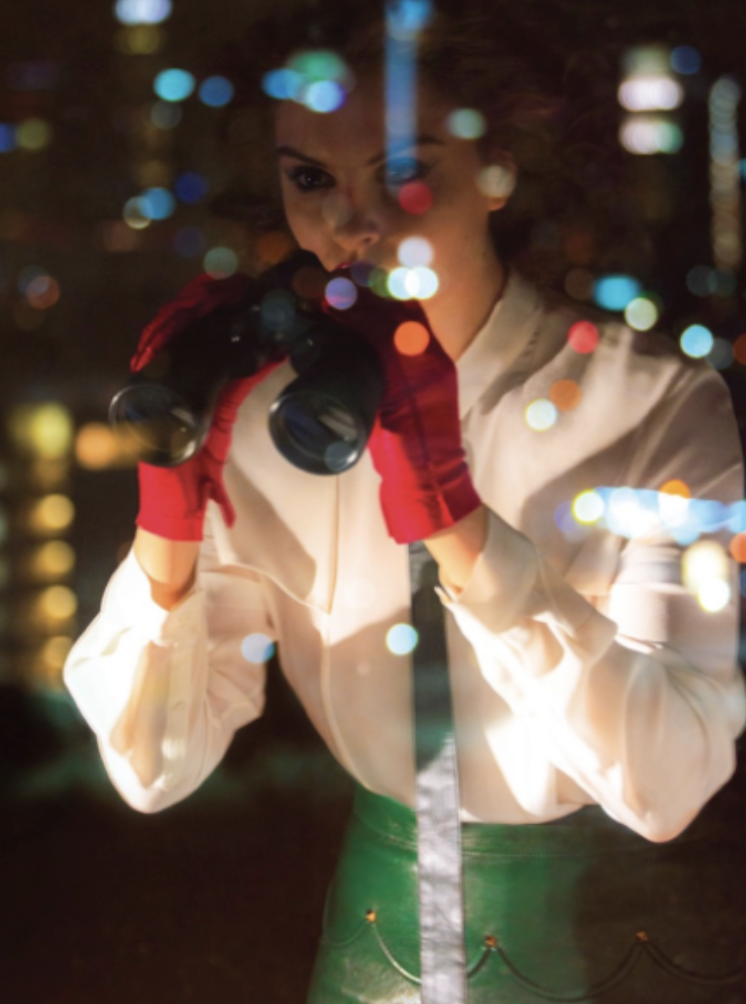ARTISTS TO WATCH THIS SUMMER
JULY 2024
Summer tends to be a slower time in the art world, with galleries, collectors and artists on vacation or hiatus. However, there still are some wonderful gallery group shows and art fairs to experience with great artists to discover. The Venice Biennale is still in full swing, through November, so book tickets now before crowds get crazy. Below are some more highlights from Venice (see our June newsletter for more) and a few artists that stood out in a recent Los Angeles scouting expedition.
REMBER YAHUARCANI
Rember Yahuarcani is a painter, writer, curator, and activist who belongs to the Aimeni clan (the White Heron clan) of the Uitoto Nation of northern Amazonia in Peru. Yahuarcani’s paintings draw on the narratives of the Uitoto mythology and Western art traditions and techniques. Since 2003, his artistic vocabulary has moved from a descriptive style found in his early paintings to the creation of large-scale lyrical landscapes like the one included in the Biennale.
Through delicate traces and bright colors, Yahuarcani presents scenes that invite us to immerse ourselves in Uitoto thinking, storytelling, and daily life in order to see and feel the world from a different belief system. The animals, plants, spirits, humans, and other beings of the Amazon rainforest that populate his paintings are depicted as molecularly connected to each other; the artist reclaims them as sources of wisdom. Yahuarcani paints his multiple characters perpetually in motion as if they were escaping from the identities and narratives imposed by the state and the Western world.
Featured in the Arsenale complex, this is the first time the work of Rember Yahuarcani is presented at the Biennale.
EMMI WHITEHORSE
Emmi Whitehorse, an enrolled member of the Navajo Nation, primarily works in abstracted large-scale poetic landscapes of the US Southwest. Whitehorse’s paintings activate the beauty and chaotic tension of rupture. She highlights the native ecologies using a traditional Diné/Navajo concept known as Hózhó, which emphasizes the interconnectedness of land and people to achieve harmony and beauty. Whitehorse’s sensorial landscape mark-making techniques, presented through mystifying compositions, illuminate alternative strategies for preserving Indigeneity and resisting colonial violence and extraction.
Whitehorse received a BA with a Major in Painting from the University of New Mexico in 1980, and an MA with a Major in Printmaking and a Minor in Art History in 1982. Her work is held in the collections of the Brooklyn Museum of Art; Crystal Bridges Museum of American Art, Bentonville, Arkansas; Denver Art Museum, Colorado; Heard Museum, Phoenix, Arizona; Museum of Fine Arts, Santa Fe, New Mexico; Westfalisches Museum, Germany; The Wheelwright Museum, Santa Fe, New Mexico; and the Whitney Museum of American Art, New York, among many others. This year is the first time her work is presented at the Biennale in Venice.
ANNA ZEMANKOVA
Evoking botanical forms, the work of Moravian-born Anna Zemánková are portals into the artist’s private world. Self-taught, Zemánková is one of the most prominent names in Art Brut circles, a French term meaning “raw art” or “rough art” that was coined by artist Jean Dubuffet to denote works more popularly known as Outsider Art.
Zemánková was dissuaded by her family from pursuing art, and instead studied dentistry. She married and raised a family, settling in Prague after WWII. As she grew older, she suffered depression, and the amputation of both legs due to diabetes. After her son provided her with art supplies, Zemánková found solace and a renewed sense of purpose in her unique creative practice. She began drawing in her 50s and from these creative marathons emerged dynamic compositions that resemble abstract flowers or insects. In her own words, Zemánková was “growing flowers that are not grown anywhere else”. In the 1970s, Zemánková also began working with embroidery and beadwork.
The work featured here is included in this year's presentation of the Biennale, Anna's second posthumous inclusion.
DALTON PAULA
Dalton Paula is a multifaceted artist working in painting, installation, performance art, photography, video, and the manufacture of objects. Full-Body Portraits is a series of sixteen paintings of historical figures of African descent who led, or were somewhat involved in, anti-slavery resistance movements in Brazil. They are presented on large-scale diptych canvases – a stylistic trait that evokes the gap as metaphor for uniting memories and histories. This establishes a dialogue between landscape and background, presenting an almost monochromatic relationship between them, and references the scenographic structures of late nineteenth- and early twentieth-century photography studios.
Objects including glasses, rocks, chairs, flags, columns, curtains, and stairs are inserted in this series in a critical and symbolic way, making evident the possible relationships between image, memory, and power.
Paula's work was shown at Art Basel Miami Beach this past year and he will have a solo show at the end of 2024 in Los Angeles.
KATE PINCUS-WHITNEY
Synthesizing contemporary life and mythology, Kate Pincus-Whitney’s new tablescape paintings map culture, place, and self through the foods and objects we consume. She packs her maximalist works with platters of food from iconic Los Angeles restaurants and eateries, glittering glassware, menus, local flora, sentimental objects, and books. Pincus-Whitney is both dyslexic and stereo blind (which affects her depth perception), so the inclusion of texts, brand labels, and icons address legibility.
A discreet and ongoing sub-series of works, dubbed the ‘door paintings,’ adhere to the dimensions of a single door turned horizontally. They are invitations to enter and join the banquet feast set out for viewers, deities, and heroines. This reorientation gestures away from so-called objective reality, leading viewers to the uncharted wilderness of psychic reality. Kate's latest show ensconces us in vibrant microcosms of personal sense memory and regional history, where certain restaurants and neighborhoods become characters themselves.
To Live and To Dine in LA / You Taste Like Home is on view until August 17, 2024.
RICHARD MISRACH
Richard Misrach, one of the most influential and internationally recognized photographers working today, features a never-before-seen series shot in Hawaii with the Alonzo King LINES Ballet, focusing on the interplay between art, environment, and the human form. Images show dancers improvising in the ocean and on volcanic cliffs. Allowing the dancers freedom to respond to the natural environment with self-direction, Misrach’s photos capture their intuitive and graceful movements. Several images in the exhibition appear as negatives, a reference to the historical evolution of photographic technique the artist began investigating when he shifted from analog to digital.
The show is on view in Los Angeles through August 3rd.
MEDRIE MACPHEE
In her newest work, Medrie MacPhee creates physical paintings composed of ordinary garments, deconstructed, then pulled flat and collaged into a distinct matrix of overlapping organic and rectangular shapes. After decades as a painter of architecturally-inspired Surrealistic landscape paintings, MacPhee shifted her focus to works that play with color and texture in a synthesis of formal improvisation and industrial design. She cuts up found and cast-off garments, then affixes them to large panels, carefully aligning seams, zippers, buttons, or belt-loops to create a new dialogue. These paintings draw their inspiration through sourcing secondhand clothing and items from the bins of 99-cent stores and charity shops, elevating them into a grander realm. Each work possesses something of the shapes of the people who wore them but enriched with new possibility.
MacPhee is a New York-based painter and this is her first show in Los Angeles, on view through July 6th.
MELANIE PULLEN
Melanie Pullen is the architect of meticulously re-constructed orchestrations of large-scale photographs depicting scenes which examine social constructs and their taboos. Resembling high-budget film noir, she narrates thematic vignettes rife with grit and glamour through challenging ideas concerning images of war, sex, violence and the voyeurism attached to their documentation and consumption. Engaging in a critical dialogue of ‘forensic aesthetics’ in her artistic practice, she interrogates and reconfigures ethical quandaries surrounding epistemologies of an object-oriented culture.
Pullen's photography has been shown in major museums and galleries internationally and is permanently in the holdings of many of the most prominent public and private collections around the world including: Colección Jump, Mexico City, Mexico; Museum of Contemporary Art (MOCA), Jacksonville, Florida; The Frederick R. Weisman Museum of Art, Pepperdine University, Malibu, California; Nasher Museum of Contemporary Art, North Carolina; and Walker Art Center Museum, Minnesota. Recently the Getty Museum acquired several pieces from her High Fashion Crime Scenes series, which now reside in their permanent collection. Her new show Voyeur is on view in Los Angeles until July 6th.




